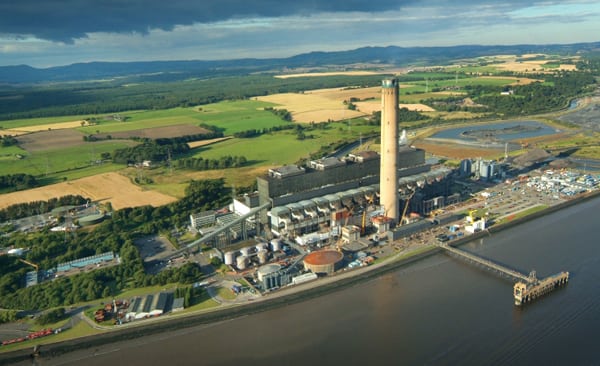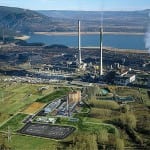Ditching the only project remaining in its £1 billion ($1.60 billion) carbon capture and storage (CCS) competition, the UK government declined to back the much-watched CCS project at the Longannet power station in Fife, Scotland, in October. The decision balances the UK’s low-carbon ambition with the need to ensure that taxpayer money is invested in “the most effective way,” the nation’s Department of Energy and Climate Change said. The funds are now expected be used to “pursue other projects” in both Scotland and England.
The 2,400-MW Longannet Power Station, owned by ScottishPower, is the third-largest coal-fired power station in Europe (Figure 3). The CCS project being built by a consortium comprising ScottishPower, UK grid operator National Grid, and oil company Shell sought to demonstrate post-combustion technology using an amine solvent to remove carbon dioxide from flue gas. The project would also have demonstrated carbon transport and storage—National Grid had planned a new carbon dioxide pipeline from the power station at Longannet to its existing pipeline near Dunipace, and Shell had been working on providing offshore transport and storage.
 |
| 3. Taking the Longannet view. The UK declined to back a flagship carbon capture and storage demonstration project that would have seen more than 20 million metric tons of carbon dioxide captured from the 2,400-MW coal-fired Longannet power plant in Fife (shown here) and pumped under the North Sea. Courtesy: ScottishPower |
ScottishPower had in May 2009 switched on the UK’s first reported 1-MW prototype of a full-scale carbon capture plant at its 40-year-old Longannet station. The prototype employs Norwegian firm Aker Clean Carbon’s post-combustion amine solvent process.
The utility said in a statement that the consortium had spent more than £20 million ($32 million) over four years and completed the front end engineering design study as part of the competition. As a result, they had submitted the “most detailed and comprehensive design of a commercial-scale end-to-end CCS project ever conducted in the UK or Europe,” the results of which could allow the government to take valuable research to other phases of the competition.
The Longannet CCS demonstration remained the only project contending for £1 billion after E.ON last year shelved plans to build its controversial Kingsnorth coal-fired plant in Kent. UK media have since reported, however, that consortium members of the Longannet project had been concerned about its commercial viability without more public backing, saying that at least £1.5 billion from the state was required.
The project had yielded some significant advances in technologies associated with CCS, developing it from a “concept in a laboratory to a definitive blueprint that could be implemented,” said ScottishPower Generation Director Hugh Finlay. “As a result of the study we now understand how the CCS process works from power station to storage site. This gives us great insight into the physical infrastructure that we need to support it, the regulatory framework it fits within and the organisational model of a CCS business.”
–Sonal Patel is POWER’s senior writer










